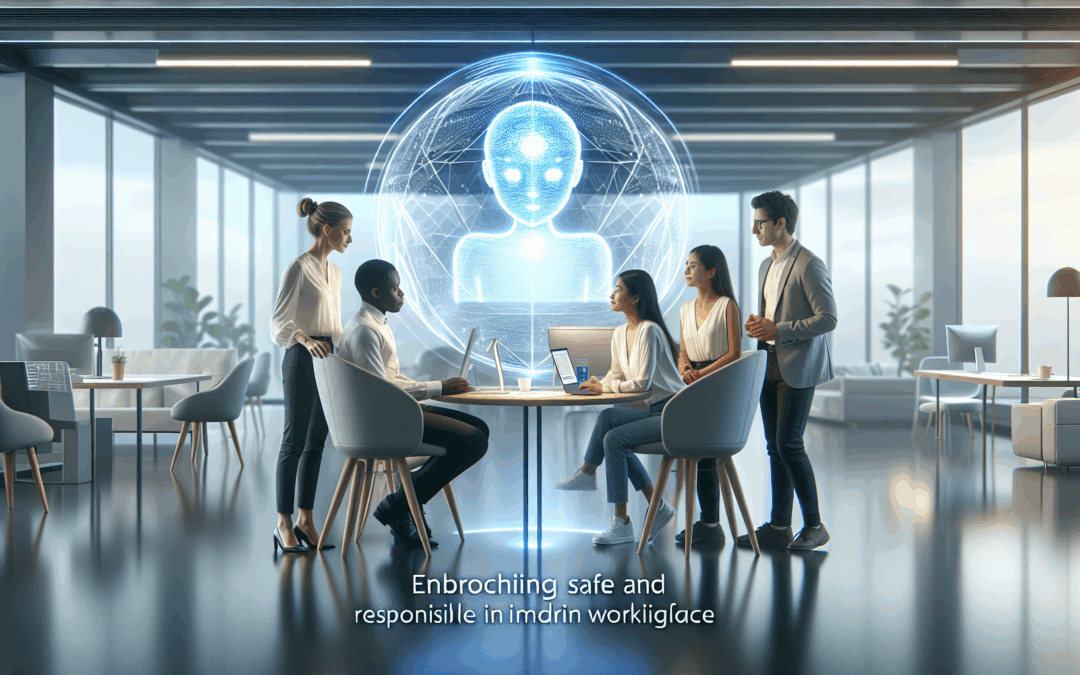Embracing Artificial Intelligence in the Modern Workplace
The integration of Artificial Intelligence (AI) into workplace systems is not just a trend—it’s a revolution reshaping how organisations operate, innovate, and compete on a global scale. From automating mundane tasks to supporting complex decision-making, AI technologies have become indispensable. However, as employers bring AI systems into their daily workflows, prioritising AI safety is paramount. Understanding Responsible Use of AI, providing effective AI Training, and focusing on Workforce Development are critical components for ensuring that AI tools serve to enhance productivity without compromising safety or ethics.
Understanding AI Safety: The Foundation of Trustworthy Technology
Artificial Intelligence Safety in the workplace goes beyond merely safeguarding data or ensuring system reliability. It encompasses a holistic approach that includes ethical considerations, accuracy of AI outputs, and the minimisation of unintended consequences. When AI operates safely, it supports employees, enabling them to WorkSmart AI—leveraging technology to optimise their productivity while maintaining control over the outcomes.
AI safety involves verifying that AI systems do not produce biased or harmful results, adhere to compliance standards, and can be audited and explained clearly to stakeholders. For organisations, this is not just about avoiding risks but building trust across their workforce and customer base.
The Role of AI Training in Cultivating a Safe Workplace
No matter how advanced the AI tools become, their effectiveness and safety heavily depend on how well the workforce understands them. AI Training is the cornerstone in enabling employees to interact confidently with AI systems and identify potential hazards. Comprehensive training programmes should focus on both the technical functioning of AI and the ethical dimensions of its deployment.
By investing in AI Training, companies empower employees to detect anomalies, report issues proactively, and contribute to refining AI integrations. This collaborative approach ensures the AI aligns with organisational goals while mitigating risks, ultimately fostering a culture of safety and innovation.
Prioritising Responsible Use of AI: Ethics and Accountability
The Responsible Use of AI is more than a buzzphrase; it’s a necessity in modern workplaces that want to avoid pitfalls such as privacy breaches, algorithmic discrimination, and decision-making black boxes. Employers and employees alike must adhere to clear guidelines governing AI deployment, including transparency, fairness, and respect for human rights.
“In any technological advancement, the measure of success lies not in the technology itself, but in how responsibly it is used,” says AI ethics expert Dr. Leah Spencer. Incorporating AI safety protocols alongside Responsible Use of AI policies helps organisations safeguard employees’ well-being, maintain compliance, and nurture an ethical AI ecosystem.
Workforce Development: Preparing Teams for the AI Era
Integration of AI constantly reshapes the skills landscape. Workforce Development strategies must therefore adapt, focusing on building AI literacy, critical thinking, and problem-solving skills across all levels of the organisation. Encouraging ongoing learning around AI fosters adaptability and resilience.
Organisations employing a strategic approach to Workforce Development see higher AI Productivity, as employees can effectively collaborate with AI systems, refine workflows, and innovate continuously. Training programmes tailored to various roles ensure that the entire workforce is prepared to navigate AI safely and efficiently.
WorkSmart AI: Safeguarding Productivity and Well-Being
The concept of WorkSmart AI embodies the intelligent, safe utilisation of artificial intelligence to enhance human work, rather than replace it. This philosophy encourages leveraging AI capabilities in ways that complement human skills, reduce repetitive workload, and open opportunities for creative and strategic contributions.
By embedding safety measures such as regular audits, real-time monitoring, and clear escalation paths, organisations can maintain high AI Productivity without sacrificing employee well-being. WorkSmart AI becomes a symbiotic relationship—AI helps humans work smarter, and humans guide AI to operate safely and fairly.
Challenges and Best Practices in Implementing AI Safety
Despite the immense benefits, implementing AI safety in the workplace presents challenges:
– **Complexity of AI Systems:** The increasingly sophisticated nature of AI models demands specialised understanding to evaluate and manage risks effectively.
– **Data Privacy and Security:** AI systems rely on vast data, raising the stakes for protecting sensitive information.
– **Bias and Fairness:** Ensuring AI decisions do not perpetuate unfair biases requires continuous oversight.
Best practices to overcome these challenges include:
– Conducting thorough risk assessments before AI deployment.
– Establishing cross-functional AI governance committees.
– Encouraging transparent communication around AI capabilities and limitations.
– Committing to periodic AI system reviews and updates.
The Future of AI Safety in the Workplace
Looking ahead, AI Safety will increasingly become integrated into the fabric of organisational culture. Technologies like explainable AI, advanced anomaly detection, and human-in-the-loop models promote safer AI interactions. On the human side, continuous AI Training and proactive Workforce Development will remain essential to sustaining responsible AI adoption.
Businesses that embed Responsible Use of AI as a core value will not just protect their employees but will also gain a significant competitive advantage. The ability to harness AI Productivity safely will define the leaders of tomorrow’s workplace.
Conclusion
Artificial Intelligence is reshaping workplaces around the globe, offering unprecedented opportunities for innovation and efficiency. However, this transformation must be managed with a clear commitment to AI Safety, responsibility, and workforce empowerment. Through robust AI Training, adherence to ethical standards, and forward-thinking Workforce Development, organisations can ensure their AI strategies are safe, productive, and sustainable.
By embracing the principles of WorkSmart AI, companies equip their teams to work smarter—not harder—with artificial intelligence, paving the way for a future where technology and humanity thrive together.
Get started today with Responsible use of AI license training.

